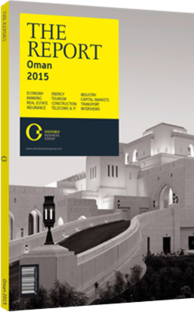Logistics sector set to benefit from improved connections
The period ahead could well be a watershed moment for the logistics sector in Oman, as a series of recent developments in infrastructure and geopolitics begin to coalesce. These moves come alongside improvements in the efficiency of the local sector, pushing the sultanate closer still to its broader goal of becoming an international logistics centre.
Sector Upgrades
As detailed elsewhere in this chapter, Oman is in the midst of a major construction drive in its ports, airports, roadways and railways infrastructure. In terms of its ports, the sultanate is concentrating container trans-shipment activities on Salalah, in the south, while a mix of bulk and container traffic for domestic consumption will pass through Sohar, north-west of the capital, Muscat.
In the capital itself, Sultan Qaboos Port is shifting focus to tourism via cruise liners, while a fourth port at Duqm is under construction in the centre of the country and will have a major role in the oil and gas sector, as well as dealing with cargoes related to petrochemicals, mining and other heavy industries. New airport or airport expansion projects are also under way in Muscat, Salalah, Duqm and other regional centres, while road construction will soon be competing for space with a new railway that will form part of a pan-GCC network.
What this reorganisation and expansion might mean for logistics companies is nothing less than the reversal of the regional logistical flow. Currently, much of that flow comes to Oman by way of the UAE and other Gulf countries. Yet Oman’s port development and expansion, along with the new railway plans, could mean the flow will go from Oman to the UAE.
Bypassing the sometimes problematic Strait of Hormuz, ships will be able to call at Indian Ocean-side ports in Oman – saving several days’ passage over Jebel Ali and other Gulf ports – and unload cargo onto a rail network that will then speed goods to other destinations in the GCC. That would mark a radical departure for Oman’s logistics sector. Currently, while served by all the major global logistics companies, the sultanate is considered a small market, largely operating as an offshoot of operations elsewhere. DHL Express, for example, operates just one flight of its own from Bahrain to Muscat each week and otherwise relies on booking air cargo space with commercial airlines.
There are already specialist logistics outfits working in key sectors – such as Zubair’s Oman Oil Industry Supplies and Services and Power Logistics in the hydrocarbons industry – while the marine logistics sector in general is very advanced. Companies operating there include Seven Seas, Maersk Shipping Services, GAC Oman, Pentagon Oman and the Oman Shipping Company, among others. These outfits have benefitted from the sultanate’s economic growth, and would be well placed to capitalise on the sector’s potential future growth, should all the pieces come together.
Opportunities & Challenges
With the completion of Muscat’s new international airport – a date for which has yet to be set, though 2016 seems likely – logistics companies will be able to secure dedicated warehousing by the runways. At the same time, the expansion of regular routes to Muscat from other global destinations should increase Oman’s attractiveness as a hub, rather than a spoke in regional air transport.
Several major challenges, however, have also been flagged by sector professionals, such as “last mile” inefficiencies in the sultanate. “Inland infrastructure is just as important as the ports,” Ali Thabet, country manager for DHL Express, told OBG. “Strong ports are important, but the real strength of Oman as a logistics hub will be in how goods are transported throughout Oman and into neighbouring countries.” While the country’s road infrastructure has improved in recent years, more still needs to be done to extend the transport network to the new industrial developments.
The second challenge will be human resources. As the sector expands, companies may find it difficult to meet staffing requirements with the local workforce. Competing for professionals in the global labour market may raise questions for the Omanisation policy.
You have reached the limit of premium articles you can view for free.
Choose from the options below to purchase print or digital editions of our Reports. You can also purchase a website subscription giving you unlimited access to all of our Reports online for 12 months.
If you have already purchased this Report or have a website subscription, please login to continue.

